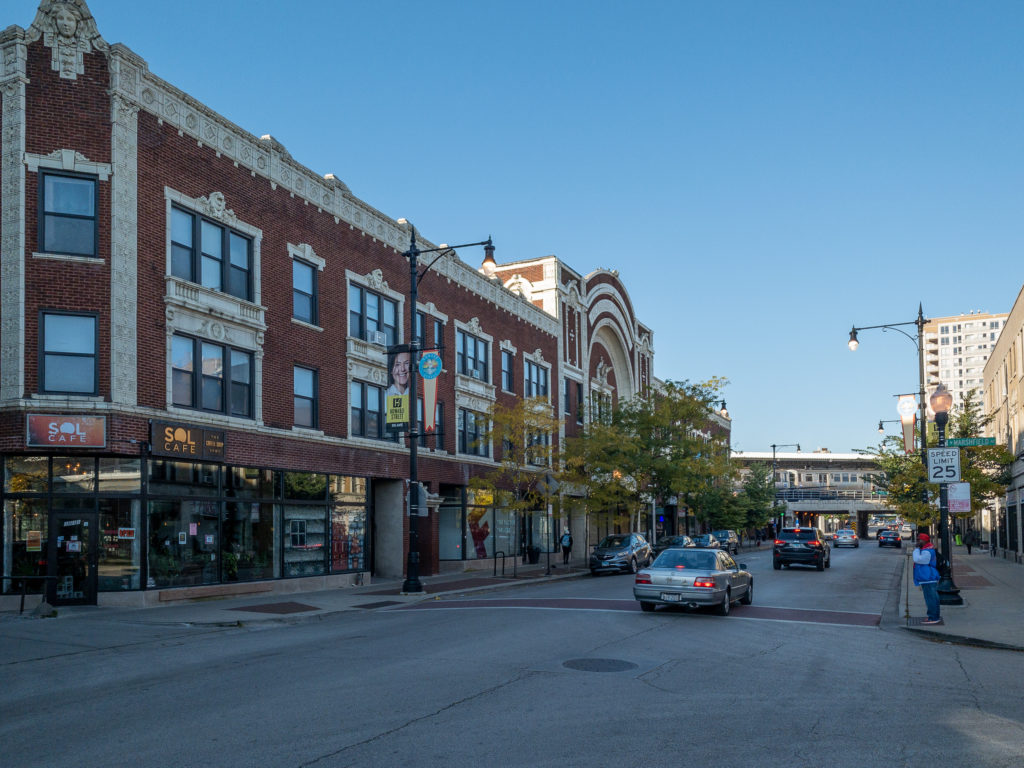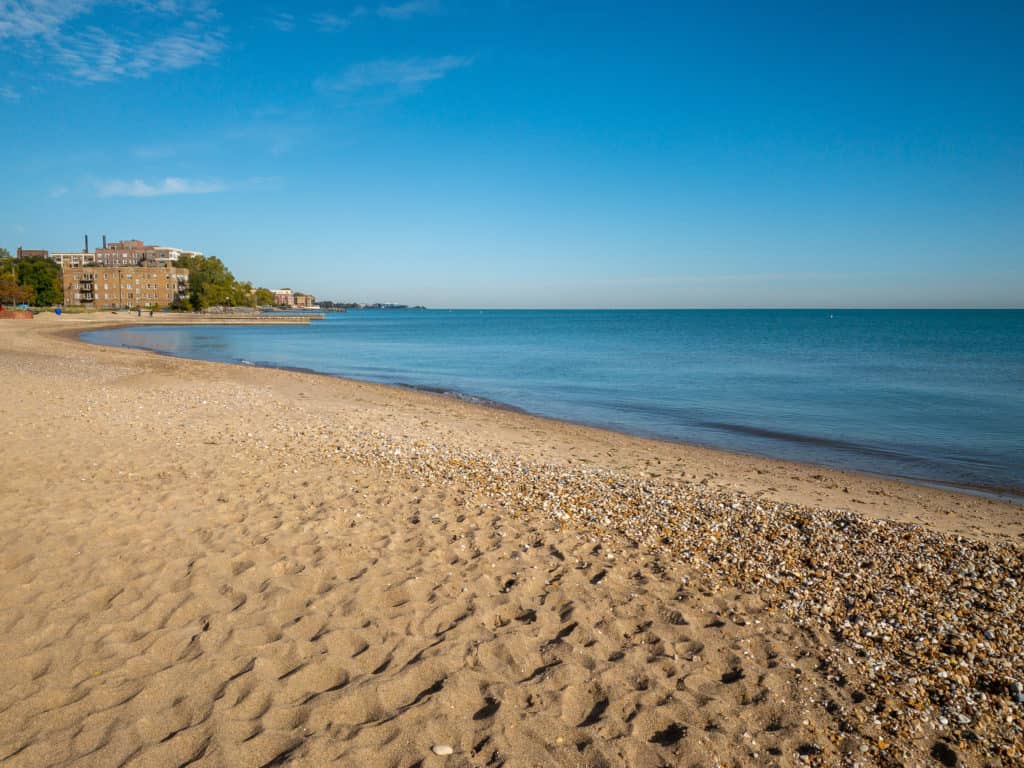Far north on the coast of Lake Michigan, you’ll find Chicago’s Rogers Park neighborhood. A long nine miles from the Loop, you won’t find any tourist traps here. Instead, this diverse community is known for its lush outdoor spaces and beaches, live theater, unique dining, and progressive culture. To the north, it is bounded by the city of Evanston. It meets Ridge Boulevard to the west, Devon Avenue and Edgewater to the south, and Lake Michigan on the east side.
The area was colonized on what was once the meeting of two Native American trails. Phillip Rogers of Ireland purchased 1,600 acres of land in the area, giving the nabe its name. It became a farming community and trading post with Native American tribes until the 1870s, when it was incorporated as a village of Illinois and eventually, part of Chicago. Today, the nabe is one of the most diverse in Chicago, reflected in its progressive culture and expansive food scene.

Rogers Park Restaurants
Local outposts and international eateries abound in this diverse food scene. Think Cajun, Ethopian, and Jamaican as well as innovative fusions, like bopNgrill’s Korean-American mashup. There’s also great dives like Smack Dab Chicago. The spot is popular for coffee on the go in the morning, and in the evening it serves as an open mic outpost with BYO instrument jam sessions. It doesn’t stop there—think Mexican, Peruvian, and unique vegetarian joints.
Rogers Park Hotels
Like most North Side neighborhoods, Rogers Park isn’t swimming with hotels. There are some accommodations by the water to accommodate Loyola University students. They range in affordability, from the Super 8 to a three-star Hampton Inn.
Rogers Park Attractions
Most of the attractions in Rogers Park center around Loyola University. The on-campus Madonna della Strada Chapel is an Art Deco masterpiece, completed in 1939. This historic landmark hosts weekly masses and can be reserved for weddings and private ceremonies.
For more learned fun, the Gerber/Hart Library & Archives has the largest circulation of gay and lesbian texts in the Midwest. It also offers lively programming including book groups and semi annual sales.
There’s also quirky entertainment to be had at the Leather Archives and Museum, held in a former theater and synagogue. It’s devoted to the leather lifestyle, full of paintings, leather whips, and 10,000 underground sex magazines.
Rogers Park Architecture
Rogers Park has several examples of early 20th century architecture. Even older than the Madonna della Strada Chapel, the Emil Bach House was designed by famed architect Frank Lloyd Wright. The building, completed in 1915, was built for Bach and his wife, the wealthy owners of Bach Brick Company. Today, the home is available for nightly rental and private events.
Rogers Park Shopping
The Rogers Park shopping scene is reflective of the nabe’s progressive culture. There’s The Armadillo’s Pillow, a quirky book shop with lots of folk art. You can also dig through the vinyl at Funk Trunk records or find collectible comics and graphic novels at Third Coast Comics. An entire afternoon could be spent in the iconic Lost Eras Costume and Prop, open in the nabe since 1969. Today, it offers every costume, mask, vintage accessory, and prop you can think of.
Rogers Park Theater
Lifeline Theatre has been a Rogers Park institution since 1985. It performs original literary adaptations as well as several children’s shows. Nearby, No Exit Cafe is home to Theo Ubique Cabaret Theater and other rotating performances. If you prefer theater of the Hollywood persuasion, New 400 Theater even has a full bar and offers 3D screenings.
Rogers Park Festivals & Events
The New 400 Theater hosts the yearly Chicago Comedy Film Festival. The event draws more than 500 filmmakers, actors, and agents to the neighborhood each year.
You can also enjoy the Glenwood Sunday Market in Rogers Park, home to local, sustainable foods.

Parks & Beaches
Loyola Park is perhaps the crown jewel of this neighborhood. The expansive park offers both green space and sandy beaches along Lake Michigan. There’s playgrounds, baseball fields, and 160 mini murals painted along the park’s 600-foot concrete sea wall. For more public art, enjoy the Mile of Murals running from Pratt Boulevard north to Estes Avenue, painted by local artists each year.
